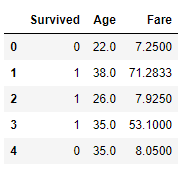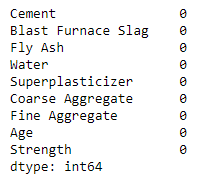Introduction
Data preprocessing is one of the many crucial steps of any Machine Learning project. As we know, our real-life data is often very unorganized and messy and without data preprocessing, there is no meaning in making a machine learning model. We have to first preprocess our data and then feed that processed data to our machine learning models for good performance. One part of preprocessing is Feature Transformation which we will discuss in this article.
Feature Transformation is a technique we should always use regardless of the model we are using, whether it is a classification task or regression task, or be it an unsupervised learning model.
What is Feature Transformation?
1. It is a technique by which we can boost our model performance. Feature transformation is a mathematical transformation in which we apply a mathematical formula to a particular column(feature) and transform the values which are useful for our further analysis.
2. It is also known as Feature Engineering, which is creating new features from existing features that may help in improving the model performance.
3. It refers to the family of algorithms that create new features using the existing features. These new features may not have the same interpretation as the original features, but they may have more explanatory power in a different space rather than in the original space.
4. This can also be used for Feature Reduction. It can be done in many ways, by linear combinations of original features or by using non-linear functions.
5. It helps machine learning algorithms to converge faster.
Why These Transformations?
1. Some Machine Learning models, like Linear and Logistic regression, assume that the variables follow a normal distribution. More likely, variables in real datasets will follow a skewed distribution.
2. By applying some transformations to these skewed variables, we can map this skewed distribution to a normal distribution so, this can increase the performance of our models.
Goal of Feature Transformations
As we know that Normal Distribution is a very important distribution in Statistics, which is key to many statisticians for solving problems in statistics. Usually, the data distribution in Nature follows a Normal distribution (examples like – age, income, height, weight, etc., ). But the features in the real-life data are not normally distributed, however it is the best approximation when we are not aware of the underlying distribution pattern.
Transformations present in scikit-learn
Sklearn has three Transformations-
1. Function Transformation
2. Power Transformation
3. Quantile transformation
Function Transformations
LOG TRANSFORMATION:
– Generally, these transformations make our data close to a normal distribution but are not able to exactly abide by a normal distribution.
– This transformation is not applied to those features which have negative values.
– This transformation is mostly applied to right-skewed data.
– Convert data from addictive Scale to multiplicative scale i,e, linearly distributed data.
RECIPROCAL TRANSFORMATION
– This transformation is not defined for zero.
– It is a powerful transformation with a radical effect.
– This transformation reverses the order among values of the same sign, so large values become smaller and vice-versa.
SQUARE TRANSFORMATION
– This transformation mostly applies to left-skewed data.
SQUARE ROOT TRANSFORMATION:
– This transformation is defined only for positive numbers.
– This transformation is weaker than Log Transformation.
– This can be used for reducing the skewness of right-skewed data.
CUSTOM TRANSFORMATION
You can refer to the Link to read more about Function Transformations.
Power Transformations
– Used when the desired output is more “Gaussian” like.
– Currently has ‘Box-Cox’ and ‘Yeo-Johnson’ transforms.
– Box-cox requires the input data to be strictly positive(not even zero is acceptable).
– for features that have zeroes or negative values, Yeo-Johnson comes to the rescue.
BOX-COX TRANSFORMATION: Sqrt/sqr/log are the special cases of this transformation.
YEO-JOHNSON TRANSFORMATION: It is a variation of the Box-Cox transform.
You can refer to the Link to read more about Power Transformations.
Implementation in Python
Function Transformations
Step-1: Import necessary Dependencies
import pandas as pd import numpy as np import scipy.stats as stats import matplotlib.pyplot as plt import seaborn as sns
Step-2: Import useful packages
from sklearn.model_selection import train_test_split from sklearn.metrics import accuracy_score from sklearn.model_selection import cross_val_score from sklearn.linear_model import LogisticRegression from sklearn.tree import DecisionTreeClassifier from sklearn.preprocessing import FunctionTransformer
Step-3: Read and Load the dataset
Python Code:

Step-4: Find the number of missing values per column
print(df.isnull().sum())

Step-5: Fill the missing values of the “Age” column with the median of the non-missing values
df['Age'].fillna(df['Age'].median(),inplace=True)
Step-6: Now, again check there is any missing value or not
print(df.isnull().sum())

Step-7: Separate independent and dependent variables
X = df.iloc[:,1:3] y = df.iloc[:,0]
Step-8: Split our dataset into train and test subsets
X_train, X_test, y_train, y_test = train_test_split(X,y,test_size=0.33,random_state=105)
Step-9: Plot the probability density function(pdf) and the Q-Q plot for the “Age” column
import warnings
warnings.filterwarnings('ignore')
plt.figure(figsize=(10,2))
plt.subplot(121)
sns.distplot(X_train['Age'])
plt.title('Age PDF')
plt.subplot(122)
stats.probplot(X_train['Age'], dist="norm", plot=plt)
plt.title('Age QQ Plot')
plt.show()
Step-10: Plot the probability density function(pdf) and the Q-Q plot for the “Fare” column
plt.figure(figsize=(10,2))
plt.subplot(121)
sns.distplot(X_train['Fare'])
plt.title('Age PDF')
plt.subplot(122)
stats.probplot(X_train['Fare'], dist="norm", plot=plt)
plt.title('Age QQ Plot')
plt.show()
Step-11: Form our Logistic Regression and Decision Tree Classifier
lr = LogisticRegression() dt = DecisionTreeClassifier()
Step-12: Check the performance of both the classifiers on the test dataset(before transformation)
lr.fit(X_train,y_train)
dt.fit(X_train,y_train)
y_pred_lr = lr.predict(X_test)
y_pred_dt = dt.predict(X_test)
print("Accuracy LR",accuracy_score(y_test,y_pred_lr))
print("Accuracy DT",accuracy_score(y_test,y_pred_dt))
![]()
Step-13: Transform our dataset using log transformation and then repeat step-11 and step-12.
trf = FunctionTransformer(func=np.log1p)
X_train_transformed = trf.fit_transform(X_train)
X_test_transformed = trf.transform(X_test)
lr = LogisticRegression()
dt= DecisionTreeClassifier()
lr.fit(X_train_transformed,y_train)
dt.fit(X_train_transformed,y_train)
y_pred_lr = lr.predict(X_test_transformed)
y_pred_dt = dt.predict(X_test_transformed)
print("Accuracy LR",accuracy_score(y_test,y_pred_lr))
print("Accuracy DT",accuracy_score(y_test,y_pred_dt))
Step-14: Plot the probability density function(pdf) and the Q-Q plot for the “Age” column
plt.figure(figsize=(10,2))
plt.subplot(121)
stats.probplot(X_train['Age'], dist="norm", plot=plt)
plt.title('Age Before Log')
plt.subplot(122)
stats.probplot(X_train_transformed['Age'], dist="norm", plot=plt)
plt.title('Age After Log')
plt.show()

Step-15: Plot the probability density function(pdf) and the Q-Q plot for the “Fare” column
plt.figure(figsize=(10,2))
plt.subplot(121)
stats.probplot(X_train['Fare'], dist="norm", plot=plt)
plt.title('Fare Before Log')
plt.subplot(122)
stats.probplot(X_train_transformed['Fare'], dist="norm", plot=plt)
plt.title('Fare After Log')
plt.show()
Conclusion: Here, we implement the “Log-Transformation” but by changing the parameters inside the functions you can easily implement other transformations as well.
– The idea behind training two models is to verify that Tree-based model accuracy is not much affected by doing feature transformations, but models like Linear Regression, Logistic Regression performance increase up to some extent.
– How to Decide whether the given Q-Q plot corresponds to normal distribution or not?
In the Q-Q plots, if the variable follows a Normal distribution, then the variable’s values should fall in a line of slope 45-degree(y=x) when plotted against the theoretical quantiles.
– The main observation is that here the “Fare” column before transformation is right-skewed but after transformation comes closer to a normal distribution, but the “Age” column is not more affected since it is approx. normally distributed before the transformation.
– The accuracy of the model after doing transformation is increased for Logistic regression, but for verification of how much accuracy changes by transformation, you have to cross-validate over the data and find the average accuracy to gain better insights.
Power Transformations
Step-1: Import necessary Dependencies
import numpy as np import pandas as pd import seaborn as sns import matplotlib.pyplot as plt import scipy.stats as stats
Step-2: Import useful packages
from sklearn.model_selection import train_test_split from sklearn.model_selection import cross_val_score from sklearn.linear_model import LinearRegression from sklearn.metrics import r2_score from sklearn.preprocessing import PowerTransformer
Step-3: Read and Load the dataset
df = pd.read_csv('concrete_data.csv')
df.head()

Step-4: Find the number of missing values per column
print(df.isnull().sum())

Step-5: Finding Statistical measures for columns
df.describe()
Step-6: Separate independent and dependent variables
X = df.iloc[:,:8] y = df.iloc[:,-1]
Step-7: Split our dataset into train and test subsets
X_train, X_test, y_train, y_test = train_test_split(X,y,test_size=0.33,random_state=105)
Step-8: Train our Linear Regression model and check the metric
lr = LinearRegression() lr.fit(X_train,y_train) y_pred = lr.predict(X_test) print(r2_score(y_test,y_pred))
![]()
Step-9: Plotting the distplots without any transformation
import warnings
warnings.filterwarnings('ignore')
for col in X_train.columns:
plt.figure(figsize=(14,4))
plt.subplot(121)
sns.distplot(X_train[col])
plt.title(col)
plt.subplot(122)
stats.probplot(X_train[col], dist="norm", plot=plt)
plt.title(col)
plt.show()
Step-10: Apply the Box-Cox transformation
pt = PowerTransformer(method='box-cox')
X_train_transformed = pt.fit_transform(X_train+0.0000001)
X_test_transformed = pt.transform(X_test+0.0000001)
pd.DataFrame({'cols':X_train.columns,'box_cox_lambdas':pt.lambdas_})
Step-11: Train our model on transformed data and check the metric
lr = LinearRegression() lr.fit(X_train_transformed,y_train) y_pred2 = lr.predict(X_test_transformed) print(r2_score(y_test,y_pred2))
Step-12: Plotting the distplots after transformation
X_train_transformed = pd.DataFrame(X_train_transformed,columns=X_train.columns)
for col in X_train_transformed.columns:
plt.figure(figsize=(14,4))
plt.subplot(121)
sns.distplot(X_train[col])
plt.title(col)
plt.subplot(122)
sns.distplot(X_train_transformed[col])
plt.title(col)
plt.show()
Conclusion: Here we implement the Box-Cox transformation but by changing the parameters inside the function you can implement Yeo-Johnson Transformation also.
– The idea behind running the describe() function is to check the values present in the columns and verify the assumptions of Power Transformation i.e, Box-Cox transformation only accepts strictly positive numbers.
– We also observe that there is an increment in the accuracy of the model, since our problem statement is a “Regression” Problem statement and we apply the linear regression, and by transformations, we make the columns closer to a normal distribution, which satisfies the assumptions of the linear regression algorithm.
– We add a very small value to all the points of the dataset so that no point value remains exactly zero and our assumption still holds for Box-Cox transformation.
End Notes
Thanks for reading!
If you liked this and want to know more, go visit my other articles on Data Science and Machine Learning by clicking on the Link
Please feel free to contact me on Linkedin, Email.
Something not mentioned or want to share your thoughts? Feel free to comment below And I’ll get back to you.
Till then Stay Home, Stay Safe to prevent the spread of COVID-19, and Keep Learning!
About the Author
Chirag Goyal
Currently, I pursuing my Bachelor of Technology (B.Tech) in Computer Science and Engineering from the Indian Institute of Technology Jodhpur(IITJ). I am very enthusiastic about Machine learning, Deep Learning, and Artificial Intelligence.
The media shown in this article are not owned by Analytics Vidhya and is used at the Author’s discretion.




